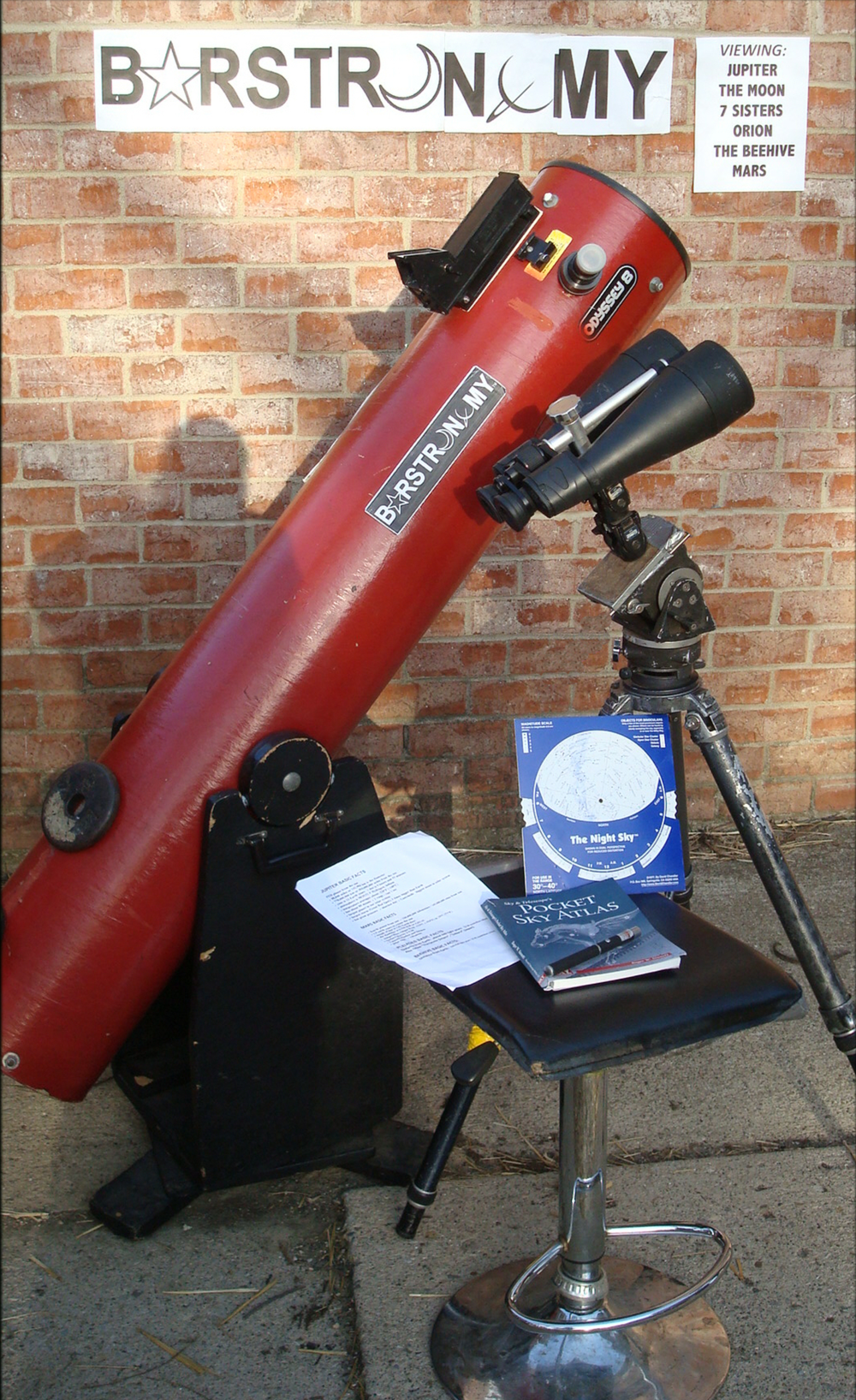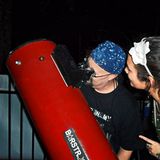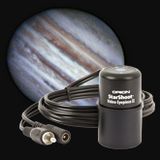
A successful night of astronomy outreach requires a few crucial ingredients to ensure both an awesome viewing experience for your viewers, a minimal amount of hassle for you, and the most fun for everybody!

.
Here is a fantastic, tried-and-true list of what you'll need, compiled by Duke Skygawker, a professional astronomy outreach coordinator and founder of "Barstronomy" in Columbus, Ohio.
1. A scope you don't mind being manhandled:
A bare-bones 6" or 8" Dobsonian telescope works best, like an Orion 8" Classic Dob (or the old Coulter Odyssey 8 I use.) Just point and push. In bright areas, you'll only be looking at the brightest targets, almost all seen naked-eye (with a handful of exceptions). Let the viewer, with a little help, do aiming and tracking. Be prepared for fumbling on their part, but most pick it up quickly. Let your participants get their hands on the scope to help them get over the fear of "ruining expensive equipment." You'll teach them quickly that a decent largish scope is not that expensive or difficult to use!
2. An inexpensive wide field eyepiece or two:
Leave your high-end eyepieces (and worry) at home. When doing astronomy outreach, your EPs will be used roughly, guaranteed. I suggest something like a GSO Superwide 20mm, which gives a great view of the Moon and a decent view of Saturn and Jupiter. If you need to bump up power a little, use a superwide 15mm or 12mm. Not tack-sharp FOVs edge-to-edge, but the wide view is what counts. Orion Sirius Plossl eyepieces are a little bit more expensive, but offer great views. Use high powers not at all or sparingly - make it easy for your patrons to track the target.
3. A unity finder with a bullseye reticle:
No finder scopes. Use an Orion EZ Finder Deluxe II or the venerable Telrad. They love it because it's like aiming a big gun barrel and putting the bull's eye on the target!
4. Binoculars on a tripod:
I recommend using inexpensive astronomy binos - I use 20x80's. Whatever tripod you use, consider strapping it to a patio rail or other object if you can, just to deter accidents. Binoculars excel for the Moon with clouds passing in front, and larger star groupings like Orion's Sword or the Pleiades. Bonus: Everyone already knows how to use them, and finds they already have astronomy-appropriate optics at home in many cases. It also keeps people busy while they wait for views through the bigger scope.
5. Signage:
Especially if you are using a dobsonian telescope, some people won't know that cannon-shaped object is a telescope, since they have a mental image of traditional refractors. A large sign or banner tacked to the wall or fence, or even stuck on your telescope will clue them in. You can tell them it's a T-shirt cannon if you want; I like to say it's a "reverse photon cannon." Have a sign that tells what you're viewing. You can print these on 8x11 paper at home, but if you re-use them much, laminate them before use.
6. A small star atlas and a planisphere:
Inexpensive, useful, and easy to show people. You may not actually need them for finding targets at your event, but they are valuable examples of what to buy to be able to navigate the sky at home. The Orion Star Target is a good planisphere, and in my opinion, the S&T Pocket Sky Atlas is the best small atlas available.
7. An adjustable stool:
It's always more comfortable to sit and view, although some won't want to do so. I'm a huge fan of the common "Airlift" hydraulic bar stool for outreach events or for taking on dark-sky trips. Though it doesn't transport flat, it's lightweight, easy to pack around, and looks great, all for about forty bucks. Trust me, you'll LOVE it. If you don't sit on it, it's also a small table!
8. Knowledge:
Stored in your brain, or on a "cheat sheet" or card. In some cases (like solar H-alpha scopes, if daytime), a small sheet posted or handed out, explaining what people will see at the EP, can spare you repeated explanations, saving your voice and perhaps sanity. The planisphere and small star atlas you brought belong count in this category as well.
9. Appropriate attire:
No-brainer, right? Dress for your locale and event as well as the weather. If you're going to be bringing your telescope to a bluegrass festival, don't wear a tux, and don't wear a swimsuit to a wedding. Your star-studded beanie might not fit at a corporate mixer, but your knit-hat-with-built-in-dreads might be perfect at a reggae festival. And as an astronomer already, you already know to dress in layers for the expected low temperature, minus 20 degrees F or so.
10. A sense of humor and an even keel:
If you have fun, so will they. We all know a few astronomy jokes, but make them appropriate for the setting. "Your world is spinning" has applicability where adult beverages are offered. "Heavenly bodies our specialty" can be good for some crowds. "Nothing's stupider than Jupiter" just sounds funny, even though it's far from true. I've kept informal track of how quickly after beginning someone will make the standard joke about the seventh planet. Record: 17 seconds, and you may hear that multiple times in an evening. Grin and bear (not BARE) it! And, if it happens to be a night you find yourself in a foul mood, FAKE IT! You'll probably wind up having a good time anyway.
Orion suggests:
An eyepiece video camera is also a great tool for astronomy outreach, especially when you're dealing with large crowds. By projecting the eyepiece view onto a larger screen, more people will be able to see what's in the eyepiece without having to wait in line for their turn at the telescope. This is also an great tool to use when there are children present. Finally, at our last Star Party, many people were excited to be able to take pictures of the Moon with their cell phones. Having a SteadyPix adapter for cameras and smartphones really helped this process!
Tony Miller, aka "Duke Skygawker," is a native Ohioan who watched the sky from an early age but never took up astronomy as a hobby until well into his 40s. His professional background is in broadcast media, journalism, and performing arts, which have certainly influenced his involvement in astronomy outreach. He can be found on Twitter (Barstronomy on Twitter) and on Facebook (Duke Skygawker), as well as at Columbus, Ohio music venues and rural dark-sky sites.






















